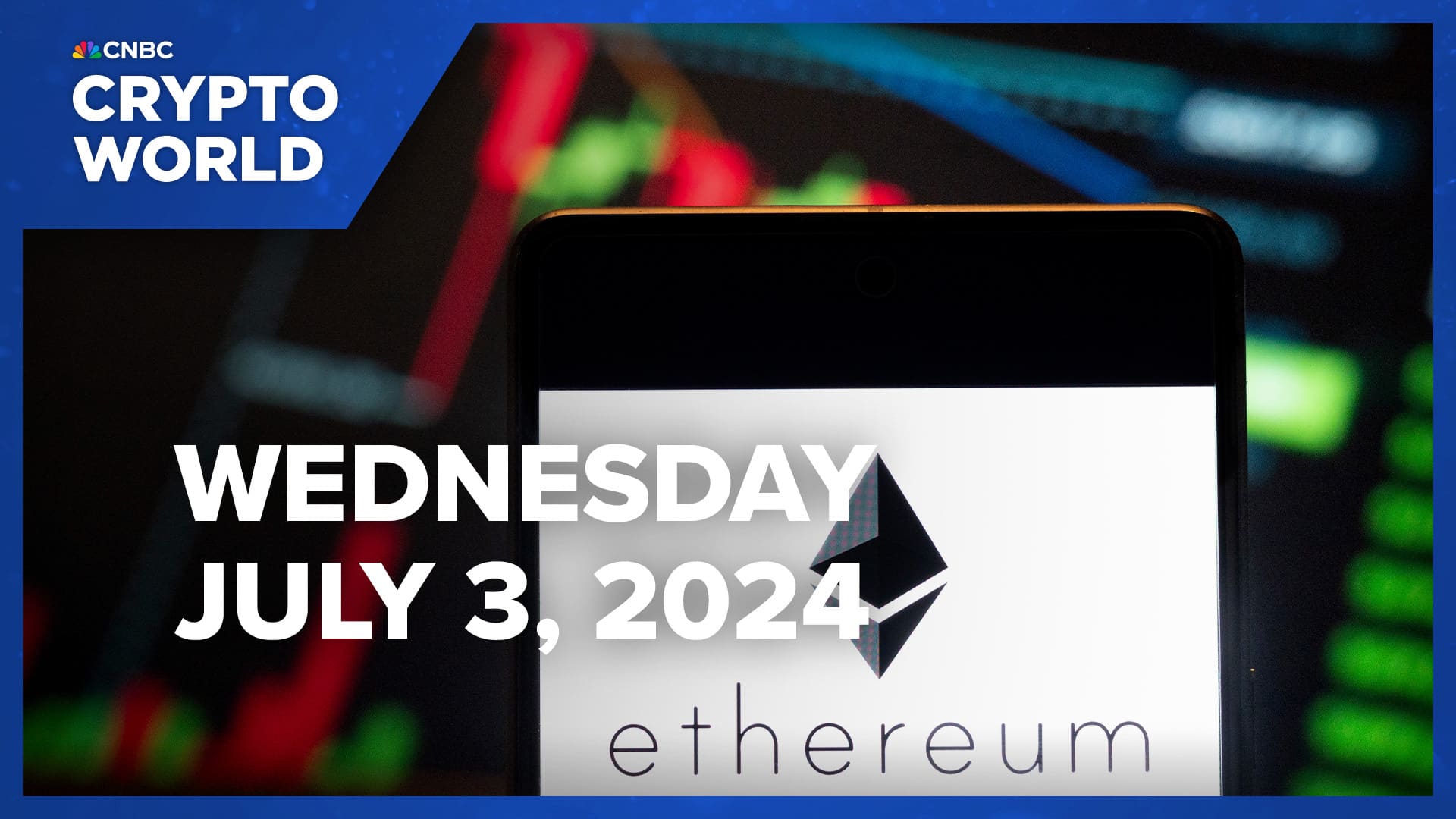News
Use power laws to predict when the price of Bitcoin will reach $1 million

The following is a guest post by Rajagopal Menon, the Vice President of WazirX.
The bull market arrives, the models to predict the price of Bitcoin arrive. In the last bull market of 2021, the Stock-to-Flow (S2F) pattern was the flavor of the season. This model, created by Plan B, assessed resource scarcity by comparing inventories to annual production. Applied to Bitcoin, the S2F model emphasized its potential as “digital gold” and provided long-term price predictions based on scarcity. However, the S2F model fizzled out during the cryptocurrency winter of 2022.
But fear not, in the current bull run, there is a new model in town: the Power Law Model, which claims to predict the price of Bitcoin with remarkable accuracy.
Understanding power laws
In a world seemingly full of chaos and randomness, scientists have discovered hidden patterns and relationships known as power laws. These laws provide a framework for understanding how different phenomena interact, revealing coherent mathematical patterns that govern various aspects of our universe.
Laws of power in everyday life
Power laws are fascinating mathematical relationships that appear in numerous phenomena, offering insights into the underlying simplicity of complex systems. They describe how two quantities relate to each other, with a change in one quantity leading to a proportional change in the other. This relationship extends across different scales, from the microcosmic to the cosmic, influencing biology, society, technology and natural phenomena.
Animal size limits
Galileo’s square-cube law is a classic example of a power law in nature, explaining how an animal’s size affects its strength. As animals get larger, their volume and weight increase much faster than their strength. This law establishes natural limits, explaining why larger animals have thicker bones and why larger animals are found in aquatic environments where buoyancy compensates for weight.
Metabolic rates
Max Kleber’s research on metabolic rates further demonstrates the applicability of power laws. He reveals that an organism’s metabolic rate scales up to ¾ of its mass, indicating that larger animals are more energy efficient. This principle has a significant impact on understanding the life cycles, growth rates and sustainability of species.
Natural phenomena and human activities
Power laws govern several phenomena, from the distribution of earthquake magnitudes to the frequency of words in a language. They explain why we observe a small number of significant events alongside numerous smaller cases. For example, Zipf’s law describes the frequency of words in languages, highlighting the disproportionate presence of common words compared to less frequent ones.
Beyond natural phenomena
Power laws extend to human activities such as economics, finance, and technology. They clarify the distribution of wealth, where a few individuals own a significant portion of wealth. In technology, power laws describe how content interacts on the Internet, with some very popular and many less popular nodes forming a long-tail distribution.
The power law of Bitcoin
Astrophysicist Giovanni Santasi discovered this connection. He says that 15 years of data shows that Bitcoin also follows a power law principle. Santostasi first shared the power law model in the r/Bitcoin subreddit in 2018. However, it saw a resurgence in January after financial YouTuber Andrei Jeikh told his 2.3 million subscribers about it in a video.
Giovanni’s theory says that the price of Bitcoin is not as random as it seems. There is randomness, but over the long term the price of Bitcoin follows a specific mathematical pattern. It’s not just a mathematical formula that someone drew a line on; instead it follows a power law like those observed throughout the universe.
The yellow line represents the current price and the red line represents the support line, the level below which Bitcoin usually never falls. The green line is the linear regression line, which is like the price to fair value, to which Bitcoin will eventually return, and the purple line is the resistance line at which Bitcoin typically peaks.
Predicting the future of Bitcoin
Santostasi’s power law model tracks Bitcoin’s price trajectory with remarkable accuracy. It features a chart showing the current price of Bitcoin, a support line indicating the level below which Bitcoin typically does not fall, a linear regression line representing a fair value price, and a resistance line marking the level which Bitcoin typically reaches before a recession.
This pattern highlights Bitcoin’s remarkably linear growth, especially evident when outliers are removed. Despite occasional fluctuations, Bitcoin’s overall trajectory follows a recognizable pattern reminiscent of other phenomena governed by the laws of power.
Implications for investors
The power law model offers interesting insights into Bitcoin’s potential future peaks. Santostasi’s analysis suggests that Bitcoin could peak at $210,000 in January 2026, followed by a subsequent decline to around $60,000. He goes on to predict that Bitcoin will be worth $1 million in July 2033. While mathematical models provide valuable information, they are not immune to errors and may fail to account for unexpected events that can have a significant impact on prices.
“All models don’t work, but some are useful” means that even though models may not be perfect, they can still provide valuable information. Models, such as the power law model or the stock-to-flow model for predicting the price of Bitcoin, have their flaws and limitations. Crypto Quant’s Julio Marino, for example, pointed out problems with the power-law model, such as underestimation of errors and the misleading impression of precision.
Interestingly, both power law and stock-to-flow models have faced similar criticisms. Despite their flaws, they have historically made almost the same predictions for the price of Bitcoin. However, over time, their predictions may diverge.
The question arises: if these models are correct, why bother with traditional investment strategies such as the 60/40 portfolio? Some argue that new models that explain Bitcoin’s behavior could offer better returns.
While some may think these models are useless, others, like the person speaking, believe they still have value. Scarcity, driven by Bitcoin’s fixed supply, plays a role in its price appreciation. Furthermore, factors such as M2 growth also influence the price of Bitcoin.
While models can provide useful information, they cannot predict the future. Even though the models have flaws, Bitcoin’s trajectory appears upward. So, while it is essential to consider these models, it is equally essential to recognize their limitations.
News
How Ether Spot ETF Approval Could Impact Crypto Prices: CNBC Crypto World

ShareShare article via FacebookShare article via TwitterShare article via LinkedInShare article via email
CNBC Crypto World features the latest news and daily trading updates from the digital currency markets and gives viewers a glimpse of what’s to come with high-profile interviews, explainers and unique stories from the ever-changing cryptocurrency industry. On today’s show, Ledn Chief Investment Officer John Glover weighs in on what’s driving cryptocurrency prices right now and how the potential approval of spot ether ETFs could impact markets.
News
Miners’ ‘Capitulation’ Signals Bitcoin Price May Have Bottomed Out: CryptoQuant

According to CryptoQuant, blockchain data shows signs that the Bitcoin mining industry is “capitulating,” a likely precursor to Bitcoin hitting a local price bottom before reaching new highs.
CryptoQuant analyzed metrics for miners, who are responsible for securing the Bitcoin network in exchange for newly minted BTC. As outlined in the market intelligence platform’s Wednesday report, multiple signs of capitulation have emerged over the past month, during which Bitcoin’s price has fallen 13% from $68,791 to $59,603.
One such sign includes a significant drop in Bitcoin’s hash rate, the total computing power that backs Bitcoin. After hitting a record high of 623 exashashes per second (EH/s) on April 27, the hash rate has fallen 7.7% to 576 EH/s, its lowest level in four months.
“Historically, extreme hash rate drawdowns have been associated with price bottoms,” CryptoQuant wrote. In particular, the 7.7% drawdown is reminiscent of an equivalent hash rate drawdown in December 2022, when Bitcoin’s price bottomed at $16,000 before rallying over 300% over the next 15 months.
This latest hash rate drop follows Bitcoin’s fourth cyclical “halving” event in April, which cut the number of coins paid out to miners in half. According to CryptoQuant’s Miner Profit/Loss Sustainability Indicator, this has left miners “mostly extremely underpaid” since April 20, forcing many to shut down mining machines that have now become unprofitable.
CrypotoQuant said that miners faced a 63% drop in daily revenue after the halving, when both Bitcoin block rewards and transaction fee revenues were much higher.
During this time, Bitcoin miners were seen moving coins from their on-chain wallets at a faster rate than usual, indicating that they may be selling their BTC reserves“Daily miner outflows reached their highest volume since May 21,” the company wrote.
Among the sales of Bitcoin miners, whales and national governmentsBitcoin’s price drop in June also hurt Bitcoin’s “hash price,” a metric of Bitcoin Miner Profitability per unit of computing power.
“Average mining revenue per hash (hash price) continues to hover near all-time lows,” CryptoQuant wrote. “Hashprice stands at $0.049 per EH/s, just above the all-time low hashprice of $0.045 reached on May 1st.”
By Ryan-Ozawa.
News
US Congressman French Hill Doubles Down on Trump’s Pro-Crypto Stance

US lawmaker French Hill has noted that Donald Trump will take a more pro-crypto approach than the current administration. The run-up to the presidential election has seen cryptocurrencies become an issue with lawmakers making huge statements ahead of the polls. Donald Trump has also been reaching out to the industry, making a pro-crypto case.
French Hill Backs Trump’s Pro-Crypto Stance
Republican Congressman French Hill has explained the type of cryptocurrency regulatory framework he believes Donald Trump could adopt in the country. In a recent interview with CNBC, French Hill said that the recently passed FIT21 bill is the type of regulatory framework the Trump administration will adopt in the sector.
#FIT21 passed the House with 71 Democratic votes, it’s exactly the kind of digital asset regulatory framework former President Trump would support if re-elected.
See more on @SquawkCNBC
photo.twitter.com/ceTmU4LApU
— French Hill (@RepFrenchHill) July 3, 2024
THE FIT21 Bill It is intended to protect investors and consumers in the market by establishing clear rules and powers for the various regulators in the sector. According to Hill, Trump will adopt it because it directs the Securities and Exchange Commission (SEC) and the Commodity Futures Trading Commission (CFTC) on the specific regulatory framework needed in the market.
“… for people who are innovating and starting a crypto token, a related business, custody of those assets, how to ensure consumer protection, so I think that framework is the right approach and that’s what I’m going to recommend to the President to pass, which is that we have not passed it between now and the end of this Congress.”
He also called Trump an innovative and pro-growth president in financial matters.
Cryptocurrency is going mainstream
This election cycle saw the cryptocurrency industry taking a place in mainstream issues following broader adoption across demographics. From candidates moving toward enthusiasts to recent pro-Congress legislation, cryptocurrencies have become a rallying point for officials. The U.S. regulatory landscape has been criticized for stifling growth due to frequent SEC LawsuitsThis has led executives to push for pro-cryptocurrency laws and raise money for pro-industry candidates.
Read also: Federal Reserve Predicts “AI Will Be Deflationary” to Stimulate Economy
David is a financial news contributor with 4 years of experience in Blockchain and cryptocurrency. He is interested in learning about emerging technologies and has an eye for breaking news. Keeping up to date with trends, David has written in several niches including regulation, partnerships, cryptocurrency, stocks, NFTs, etc. Away from the financial markets, David enjoys cycling and horseback riding.
News
US Court Orders Sam Ikkurty to Pay $84 Million for Cryptocurrency Ponzi Scheme

A federal court has ordered Jafia LLC and its owner, Sam Ikkurty, to pay nearly $84 million to cryptocurrency investors after ruling that the company was operating a Ponzi scheme.
The ruling, issued by Judge Mary Rowland in the U.S. District Court for the Northern District of Illinois, follows a lawsuit filed by the Commodity Futures Trading Commission (CFTC) in 2022 after the fund collapsed.
Judge Rowland found that Ikkurty, based in Portland, Oregon, did numerous false claims on his company’s hedge funds.
These included misleading statements about his trading experience and the promise of high and stable profits. Instead, Ikkurty used funds from new investors to pay off previous investors, a hallmark of a Ponzi scheme.
The Ponzi Scheme
The court found that Ikkurty misappropriated investment funds for personal use without the knowledge of the investors. These funds were used for personal use and were reported as Fraudulent Investmentscausing significant financial losses to customers.
This non-transparent operation violated Transparency Commission regulations, which led to the imposition of a hefty fine to compensate defrauded investors and restore some public confidence in the financial system.
Judge Rowland emphasized that fraudulent activity such as this violates the law and undermines the integrity of modern financial markets. The $84 million award seeks to address the financial harm inflicted on investors and reinforce the importance of legal compliance in cryptocurrency trading.
-

 News12 months ago
News12 months agoCryptocurrency exchanges Binance and KuCoin register with India’s financial intelligence unit as cryptocurrency credibility improves
-

 News10 months ago
News10 months agoMiners’ ‘Capitulation’ Signals Bitcoin Price May Have Bottomed Out: CryptoQuant
-

 Altcoin9 months ago
Altcoin9 months agoOn-chain data confirms whales are preparing for altcoin surge with increased buy orders
-

 Bitcoin9 months ago
Bitcoin9 months agoBitcoin (BTC), Stocks Bleed as China’s Surprise Rate Cut Signals Panic, Treasury Yield Curve Steepens
-

 Videos12 months ago
Videos12 months agoBitcoin Price AFTER Halving REVEALED! What’s next?
-

 Bitcoin11 months ago
Bitcoin11 months agoBitcoin Could Test Record Highs Next Week in ETF Flows, Says Analyst; Coinbase appears in the update
-

 Videos12 months ago
Videos12 months agoBlackRock Will Send Bitcoin to $116,000 in the Next 51 Days (XRP News)
-

 Videos12 months ago
Videos12 months agoAre cryptocurrencies in trouble? Bitcoin Insider Reveals “What’s Next?”
-

 Videos11 months ago
Videos11 months agoBREAKING NEWS: The 19 best cryptocurrencies ready to skyrocket!
-

 Videos12 months ago
Videos12 months agoCryptocurrency Crash Caused by THIS…
-

 Videos11 months ago
Videos11 months agoThe REAL reason why cryptocurrency is going up!
-

 Altcoin11 months ago
Altcoin11 months agoThe best Altcoins to buy before they rise





